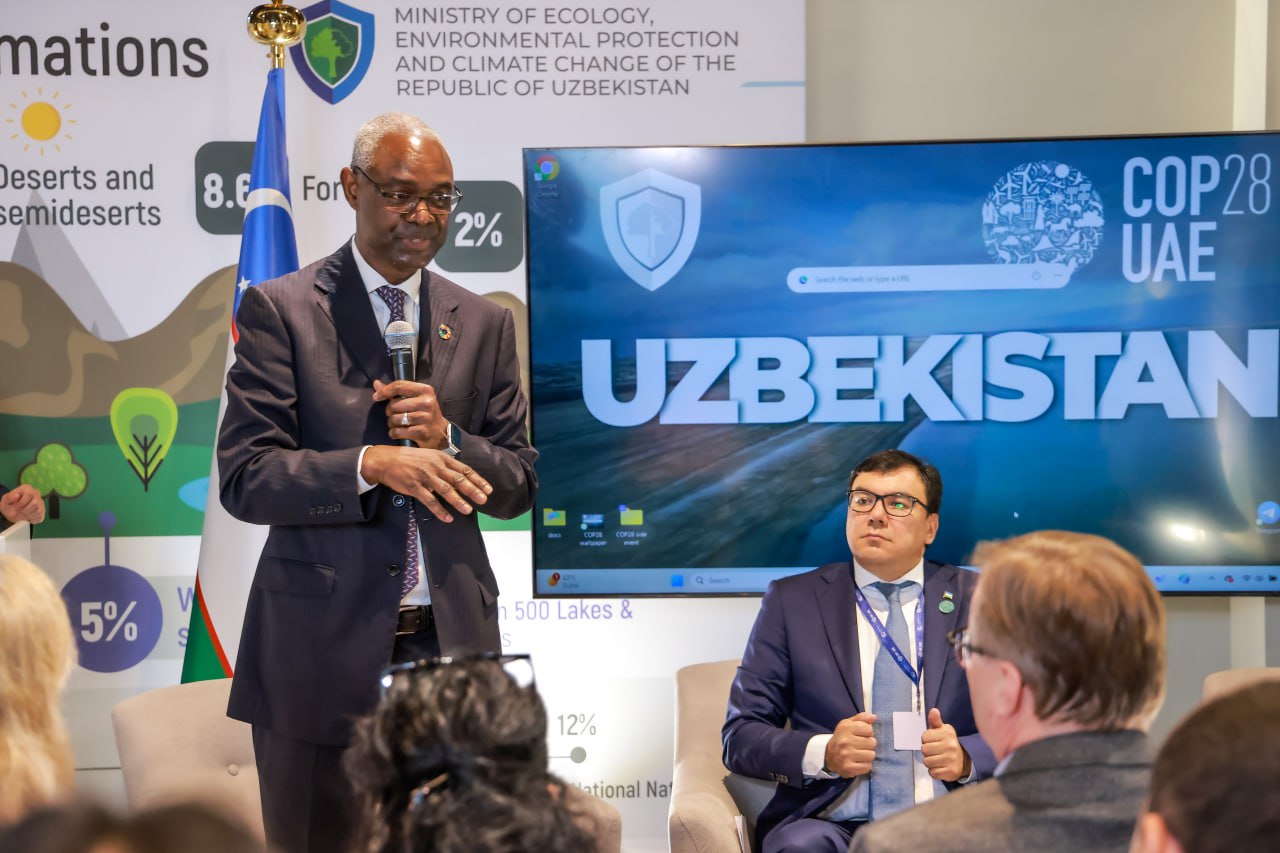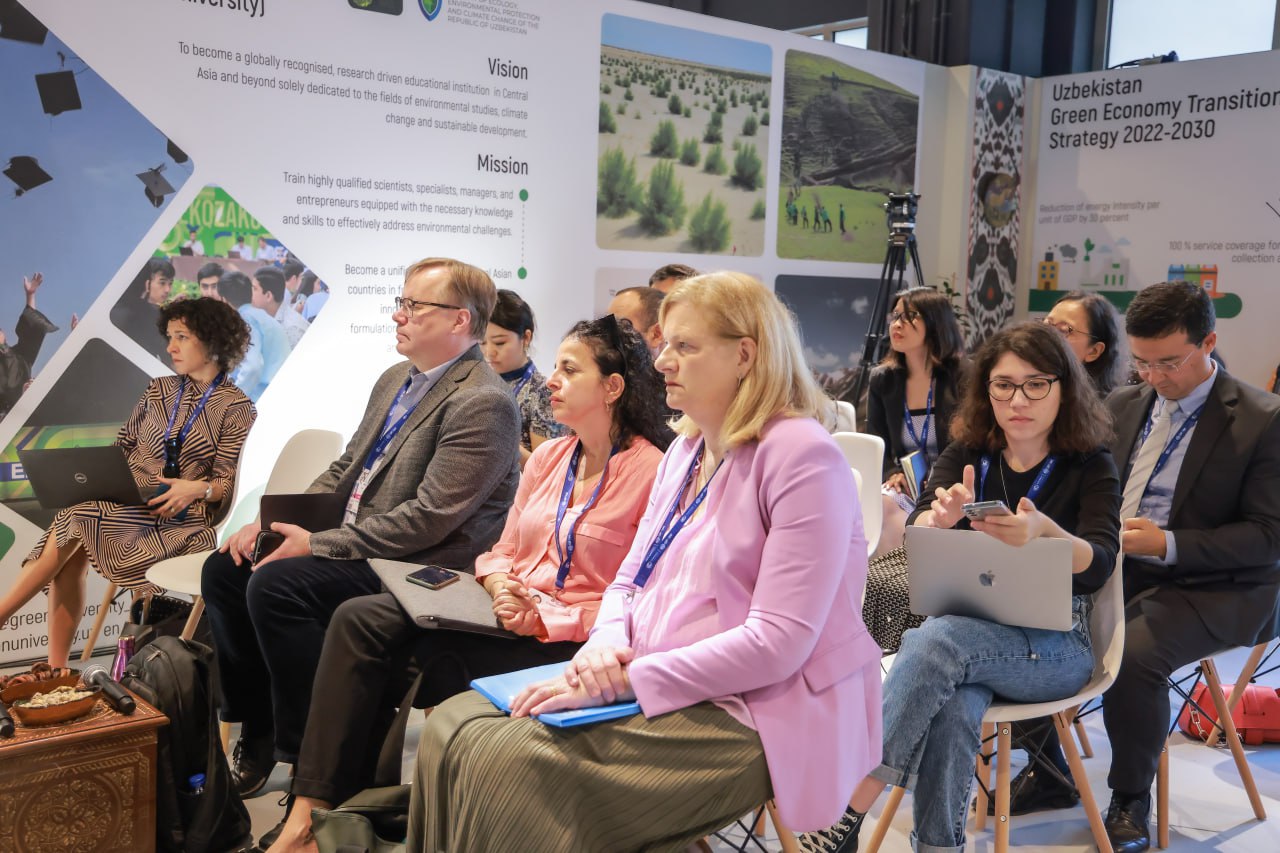
An event titled "Mapping and Mitigating Dust Storm (SDS) Sources in Central Asia" took place at the “Uzbekistan”Pavilion in the “Dubai Expo” complex in Dubai.
The seminar was organized as part of the COP28 World Climate Forum, the event was attended by the UN Deputy Secretary-General and Executive Secretary of the UN Convention to Combat Desertification (UNCCD), Ibrahim Thiaw, the Minister of Ecology, Environmental Protection, and Climate Change of the Republic of Uzbekistan, Aziz Abdukhakimov, the Head of the Forestry and Timber Division, Forests, Land, and Housing Construction of the United Nations Economic Commission for Europe (UNECE/FAO), Liliana Annovazzi-Jakab, the Director of the Finnish Meteorological Institute, Harri Kalevi Pietarila, as well as experts and representatives of the media.
During the event, Ibrahim Thiaw specifically highlighted the 21st session of the Committee for the Review of the Implementation of the United Nations Convention to Combat Desertification (CRIC21), which recently took place in Samarkand. He noted that various pertinent issues were discussed during the conference, as well as the effective desertification control reforms being carried out in Uzbekistan.
"During CRIC21, I visited the Aral Sea region and witnessed the situation there," said Ibrahim Thiaw. "Today, under the leadership of the President of the Republic of Uzbekistan, numerous plants resistant to desert climates are being planted to green the dried-up bed of the Aral Sea and improve the ecological situation. This, in turn, helps prevent dust and sand storms," added the Deputy Secretary-General.
In turn, Aziz Abdukhakimov emphasized that comprehensive actions at all levels, a reevaluation of land relationships, a scientific approach based on scientific data, and the collaboration of academics, specialists, and experts are necessary to combat sand and dust storms. "In the “Uzbekistan” Pavilion, we pay special attention to the issue of sand and dust storms, and it is a very relevant topic not only for Uzbekistan but for the whole world. Climate change exacerbates this environmental phenomenon," said A. Abdukhakimov. "Since a significant part of the country's territory consists of steppes and deserts, a considerable area of Uzbekistan is affected by the negative impact of dust storms. Therefore, in order to find an effective solution to the problem, we strive to bring together scientists and specialists at the newly established Central Asian Green University in Tashkent," added the Minister.
A. Abdukhakimov particularly emphasized the need for regional cooperation, convenient financing, and resource mobilization to address the transboundary nature of sand and dust storms. At the same time, SDS cause serious damage to air and water quality, health, and ecosystems. Therefore, the Minister stressed the importance of identifying storms through mapping the active points of anthropogenic sources and the need for joint efforts to reduce the risk.
It was noted that in Central Asian countries, the systems for predicting, early warning, and monitoring fire safety conditions are not sufficiently developed. This hinders information exchange between countries affected by SDS and undermines efforts to mitigate environmental problems. This issue received special attention at the event.
Additionally, Liliana Annovazzi-Jakab, Harri Kalevi Pietarila, and the Director of the International Innovation Center of the Aral Sea Basin under the Ministry of Ecology, Environmental Protection, and Climate Change of the Republic of Uzbekistan, Bakhitjon Khabibullaev, delivered presentations at the event. In his speech, Bakhitjon Khabibullaev noted that work is underway to revegetate the dried bottom of the Aral Sea, and cooperation with a number of international organizations has been established in this direction.
As well as, climate-friendly plants are being planted, and other initiatives are being implemented.
For reference, more than 80 percent of the territory of Central Asia is occupied by deserts and steppes, which are the central natural sources of dust and sand storms. However, due to climate change and irrational land use practices in these landscapes, conditions for anthropogenic SDS sources have arisen in Central Asia. Additionally, the drying up of the Aral Sea has led to the exploitation of 5.5 million hectares of saline desert, which is a source of 100 million tons of dust and toxic salt. Land reclamation works are being carried out in this area, and the current forest area amounts to 1.7 million hectares.















